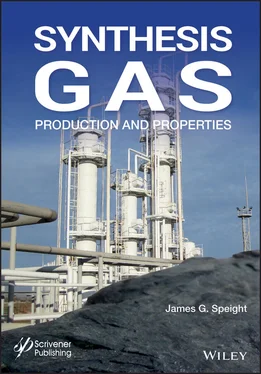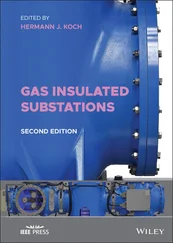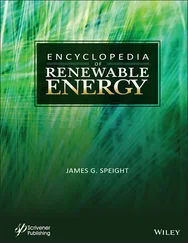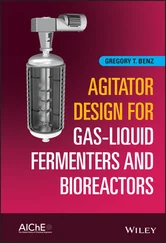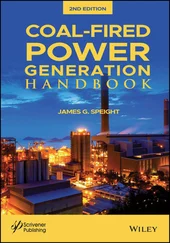1 Cover
2 Preface
3 Part 1: PRODUCTION
1 Energy Sources and Energy Supply1.1 Introduction 1.2 Typical Energy Sources 1.3 Other Energy Sources 1.4 Energy Supply 1.5 Energy Independence References 2 Production of Synthesis Gas2.1 Introduction 2.2 Synthesis Gas Generation 2.3 Feedstocks 2.4 Influence of Feedstock Quality 2.5 Gasification Processes 2.6 Products References 3 Gasifier Types and Gasification Chemistry3.1 Introduction 3.2 Gasifier Types 3.3 General Chemistry 3.4 Process Options References 4 Gasification of Coal4.1 Introduction 4.2 Coal Types and Properties 4.3 Gas Products 4.4 Product Quality 4.5 Chemicals Production 4.6 Advantages and Limitations References 5 Gasification of Heavy Feedstocks5.1 Introduction 5.3 Synthesis Gas Production 5.4 Products 5.5 Advantages and Limitations References 6 Gasification of Biomass6.1 Introduction 6.2 Gasification Chemistry 6.3 Gasification Processes 6.4 Gas Production and Products 6.5 The Future References 7 Gasification of Waste7.1 Introduction 7.2 Waste Types 7.3 Feedstock Properties 7.4 Fuel Production 7.5 Process Products 7.6 Advantages and Limitations References 8 Reforming Processes8.1 Introduction 8.2 Processes Requiring Hydrogen 8.3 Feedstocks 8.4 Process Chemistry 8.5 Commercial Processes 8.6 Catalysts 8.7 Hydrogen Purification 8.8 Hydrogen Management References 9 Gas Conditioning and Cleaning9.1 Introduction 9.2 Gas Streams 9.3 Synthesis Gas Cleaning 9.4 Water Removal 9.5 Acid Gas Removal 9.6 Removal of Condensable Hydrocarbons 9.7 Tar Removal 9.8 Other Contaminant Removal 9.9 Tail Gas Cleaning References
4 Part 2: FUELS AND CHEMICALS FROM SYNTHESIS GAS 10 The Fischer-Tropsch Process10.1 Introduction 10.2 History and Development of the Process 10.3 Synthesis Gas 10.4 Production of Synthesis Gas 10.5 Process Parameters 10.6 Reactors and Catalysts 10.7 Products and Product Quality 10.8 Fischer-Tropsch Chemistry References 11 Synthesis Gas in the Refinery11.1 Introduction 11.2 Processes and Feedstocks 11.3 Synthetic Fuel Production 11.4 Sabatier-Senderens Process 11.5 The Future References 12 Hydrogen Production12.1 Introduction 12.2 Processes 12.3 Hydrogen Purification 12.4 Hydrogen Management References 13 Chemicals from Synthesis Gas13.1 Introduction 13.2 Historical Aspects and Overview 13.3 The Petrochemical Industry 13.4 Petrochemicals 13.5 The Future References 14 Technology Integration14.1 Introduction 14.2 Applications and Products 14.3 Environmental Benefits 14.4 A Process for Now and the Future 14.5 Conclusions References
5 Conversion Factors
6 Glossary
7 About the Author
8 Index
9 End User License Agreement
1 Chapter 1Table 1.1 Simplified differentiation between conventional crude oil, tight oi...Table 1.2 Types of coal.Table 1.3 Acidic and alkaline methods for biomass treatment.Table 1.4 Summation of the methods for the pretreatment of biomass feedstocks...
2 Chapter 2Table 2.1 Example of chemicals produced from synthesis gas.Table 2.2 Examples of the properties of various resids available for on-site ...Table 2.3 Examples of other refinery feedstocks that are available for on-sit...Table 2.4 The four main types (ranks) of coal.Table 2.5 Advantages and disadvantages of using biomass as a gasification fee...Table 2.6 Types of reactions that occur in a gasifier.
3 Chapter 3Table 3.1 Categories of gasification processes (Braunstein et al. , 1977).Table 3.2 Summary of the characteristics of the various types of gasifier.Table 3.3 Comparison of products from combustion and gasification processes.Table 3.4 Coal gasification reactions.Table 3.5 Gasification products.
4 Chapter 4Table 4.1 Products from synthesis gas.Table 4.2 Coal gasification reactions.Table 4.3 Coal gasification products.Table 4.4 Products (% w/w) from coal carbonization.
5 Chapter 5Table 5.1 Examples of the properties of various resids.Table 5.2 Examples of other refinery feedstocks that are available for on-sit...Table 5.3 Options for resid processing in a refinery.Table 5.4 The gasification process flow for crude oil coke.Table 5.5 Illustration of the production of petrochemical starting materials ...
6 Chapter 6Table 6.1 Gasification products.Table 6.2 Reactions that occur during gasification of a carbonaceous feedstoc...Table 6.3 Acidic and alkaline methods for biomass treatment.Table 6.4 Summation of the methods for the pretreatment of biomass feedstocks...Table 6.5 Characteristics of the different types of gasifiers.Table 6.6 Biomass properties that influence the gasification process.Table 6.7 Predominant reactions occurring during biomass gasification.Table 6.8 Biomass classification, sub-classification, and potential use.Table 6.9 Composition of various types of biomass.Table 6.10 The advantages and disadvantages of using biomass as a feedstock f...
7 Chapter 7Table 7.1 Sources and types of waste.Table 7.2 General composition of municipal solid waste.Table 7.3 General properties of classification of tars by formation temperatu...
8 Chapter 9Table 9.1 Common methods for the removal of carbon dioxide and hydrogen sulfi...
9 Chapter 10Table 10.1 Reactions that occur during gasification of a carbonaceous feedsto...Table 10.2 History and evolution of the fischer-tropsch process.Table 10.3 Carbon chain groups of the range of fischer-tropsch products which...
10 Chapter 11Table 11.1 Options for resid processing in a refinery.Table 11.2 Range of products from the Fischer-Tropsch process.Table 11.3 Benefits of Fischer-Tropsch synthetic fuels.
11 Chapter 12Table 12.1 Summary of typical hydrogen application and production process in ...Table 12.2 The periodic table of the elements.
12 Chapter 13Table 13.1 The various distillation fractions of crude oil.Table 13.2 Properties of hydrocarbon products from crude oil (excluding liqui...Table 13.3 Examples of products from the petrochemical industry.Table 13.4 Naphtha production.Table 13.5 Alternative feedstocks for the production of petrochemicals.Table 13.6 Illustration of the production of petrochemical starting materials...
13 Chapter 14Table 14.1 Examples of feedstocks for, and products from, the gasification pr...
1 Chapter 1Figure 1.1 Types of energy resources.
2 Chapter 2Figure 2.1 Potential products from synthesis gas produced from gasification ...
3 Chapter 3Figure 3.1 The principal types of gasifiers.
4 Chapter 5Figure 5.1 The distillation section of a refinery.
5 Chapter 6Figure 6.1 The gasification process can accommodate a variety of carbonaceou...Figure 6.2 Potential products from heavy feedstock gasification.
6 Chapter 10Figure 10.1 Routes to chemicals from synthesis gas and methanol.
7 Chapter 11Figure 11.1 The gasification process can accommodate a variety of feedstocks...Figure 11.2 Potential products from synthesis gas.
8 Chapter 13Figure 13.1 Raw materials and primary petrochemicals.Figure 13.2 Schematic of a refinery showing the production of products durin...Figure 13.3 Representation of the various isomers of butylene (C 4H 8).
1 Cover
2 Table of Contents
3 Begin Reading
1 ii
2 iii
3 iv
4 xiii
5 1
6 3
7 4
8 5
9 6
10 7
11 8
12 9
13 10
14 11
15 12
16 13
17 14
18 15
19 16
20 17
21 18
22 19
23 20
24 21
25 22
26 23
27 24
28 25
29 26
30 27
31 28
32 29
33 30
34 31
35 32
36 33
37 34
38 35
39 36
40 37
41 38
42 39
43 40
44 41
45 42
46 43
47 44
48 45
Читать дальше
